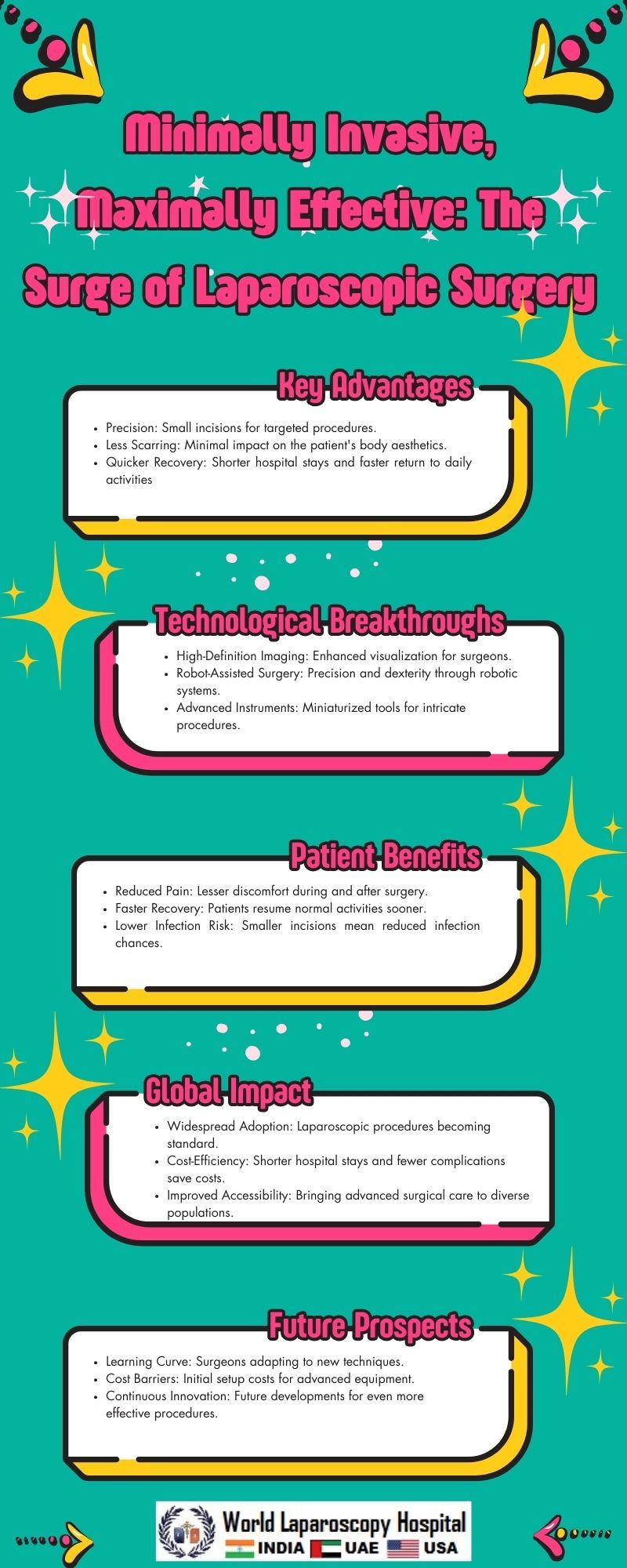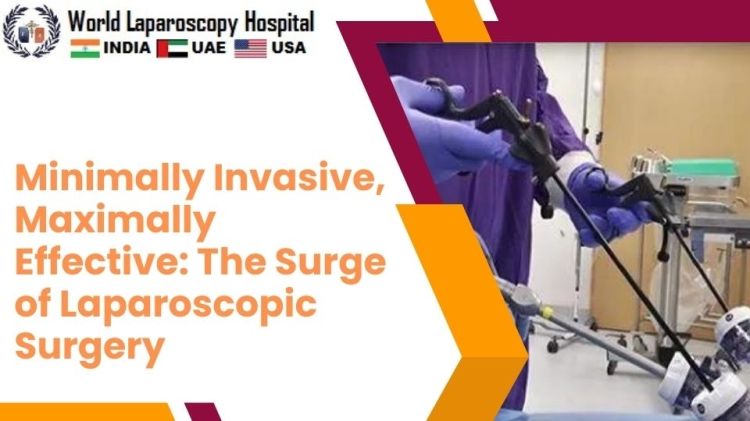Minimally Invasive, Maximally Effective: The Surge of Laparoscopic Surgery
Introduction:
In the ever-evolving landscape of medical science, advancements in surgical techniques have played a pivotal role in improving patient outcomes and reducing the burden of invasive procedures. One such transformative approach that has gained widespread recognition is laparoscopic surgery. Characterized by its minimally invasive nature, laparoscopic surgery has surged to the forefront of medical practice, revolutionizing the way various surgeries are performed across different disciplines.

The Evolution of Surgical Techniques:
To understand the significance of laparoscopic surgery, it's essential to trace the evolution of surgical techniques. Traditional open surgeries, with large incisions and extended recovery periods, were once the standard. However, the quest for improved patient care and the desire to minimize the physical impact of surgeries led to the development of minimally invasive procedures.
The Birth of Laparoscopic Surgery:
Laparoscopic surgery, also known as keyhole or minimally invasive surgery, emerged as a groundbreaking alternative to conventional open surgeries. The technique involves making small incisions through which a thin, flexible tube equipped with a camera and surgical instruments is inserted. This allows surgeons to visualize the internal organs on a monitor and perform intricate procedures with precision.
Advantages of Laparoscopic Surgery:
The surge in popularity of laparoscopic surgery can be attributed to its numerous advantages over traditional open surgeries. Firstly, the smaller incisions result in reduced trauma to the patient's body, leading to quicker recovery times and shorter hospital stays. Additionally, the minimally invasive nature often translates to less postoperative pain and a lower risk of complications such as infections.
Versatility Across Medical Disciplines:
Laparoscopic surgery's versatility is a key factor contributing to its widespread adoption. Initially developed for abdominal surgeries, its applications have expanded across various medical disciplines. From gynecological procedures like hysterectomies to urological surgeries and even certain cardiac interventions, laparoscopic techniques have proven effective and safe.
Technological Innovations Driving Laparoscopic Advancements:
Technological innovations have played a crucial role in enhancing the efficacy of laparoscopic surgery. High-definition cameras, improved lighting systems, and robotic-assisted platforms have elevated the precision and capabilities of laparoscopic procedures. Surgeons can now navigate complex anatomical structures with greater ease, pushing the boundaries of what is surgically achievable.
Overcoming Challenges: Learning Curve and Cost Considerations:
While laparoscopic surgery offers a multitude of benefits, it is not without challenges. Surgeons transitioning from traditional open techniques to laparoscopy face a learning curve due to the unique skills required for hand-eye coordination in a two-dimensional visual field. Additionally, the initial costs associated with acquiring laparoscopic equipment and training personnel can pose financial challenges for healthcare institutions.
Patient-Centric Care: Redefining Surgical Experiences:
The patient experience is at the heart of modern healthcare, and laparoscopic surgery aligns with the paradigm shift towards patient-centric care. Smaller incisions, reduced pain, and faster recovery times contribute to an overall positive experience for patients undergoing laparoscopic procedures. This focus on patient well-being is reshaping the expectations and standards of surgical care.
Case Studies: Laparoscopic Success Stories:
Examining specific case studies highlights the success and efficacy of laparoscopic surgery in various medical scenarios. From gallbladder removal to colorectal surgeries and bariatric procedures, the positive outcomes and patient testimonials underscore the transformative impact of laparoscopic techniques.
Future Directions: The Ongoing Evolution of Laparoscopic Surgery:
As technology continues to advance, the future of laparoscopic surgery holds exciting possibilities. Innovations such as augmented reality, artificial intelligence, and enhanced robotics are poised to further refine and expand the applications of laparoscopic techniques. These developments aim to make surgeries even more precise, accessible, and tailored to individual patient needs.
Conclusion:
The surge of laparoscopic surgery represents a significant milestone in the evolution of surgical techniques. Its minimally invasive approach, coupled with technological innovations, has redefined the landscape of various medical specialties. From improving patient outcomes to reshaping the overall surgical experience, laparoscopic surgery stands as a testament to the relentless pursuit of excellence in medical science. As it continues to evolve, the impact of laparoscopic surgery on healthcare is likely to grow, offering new possibilities for patients and surgeons alike.






